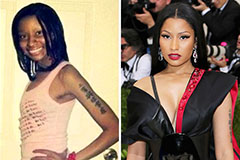Discover Advanced Assistive Instruments for Individuals With Visual Impairments
The landscape of assistive technology for people with aesthetic problems is advancing swiftly, offering a variety of ingenious gadgets that improve autonomy and interaction (Braille displays and notetakers). From clever glasses that seamlessly combine aesthetic input with acoustic advice to innovative navigation applications that redefine spatial awareness, these tools are improving possibilities. Furthermore, the most recent improvements in Braille innovation and voice-activated systems substantially add to availability. The effects of these developments expand much past simple capability; they test traditional perceptions of disability and independence. What might this imply for the future of incorporation and support?
Smart Glasses Innovations
Smart glasses represent a substantial development in assistive innovation for people with aesthetic problems. These innovative devices incorporate numerous features designed to enhance the individual's communication with their setting. Outfitted with sensors and electronic cameras, clever glasses can catch real-time aesthetic details, which is after that processed and communicated to the customer through audio feedback or haptic sensations. This functionality allows individuals to obtain prompt summaries of their environments, enhancing their capability to navigate and engage with the globe.
Additionally, advancements in expert system have actually even more boosted the capabilities of clever glasses. Artificial intelligence algorithms can recognize faces, read message, and recognize items, making them indispensable tools for day-to-day tasks. Users can get auditory signs that offer context about their atmosphere, fostering freedom and confidence.
In addition, the ergonomic design and light-weight nature of many wise glasses make them ideal for extended usage, making sure comfort while improving functionality. As these gadgets remain to progress, they hold the potential to reinvent the means individuals with aesthetic problems experience their day-to-days live, linking the gap in between accessibility and innovation. The ongoing study and development in this field assurance to broaden the opportunities for wise glasses, making them an important part of modern-day assistive gadgets.
Navigating Apps and Tools
Various navigating apps and tools have emerged as necessary resources for people with aesthetic impairments, considerably boosting their capacity to traverse unfamiliar settings. These technologies take advantage of general practitioner capability, audio cues, and real-time data to offer individuals with specific navigating aid.
One prominent example is the Aira app, which links individuals to experienced agents who can give visual summaries of environments and navigating support via an online video feed. This service enhances the user's spatial recognition and self-confidence while browsing. One more noteworthy tool is Seeing Eye GPS, which uses voice-guided navigating and points of interest, enabling users to access vital details concerning their environments.

As technology proceeds to advancement, the growth of a lot more sophisticated navigating tools guarantees to further encourage people with visual impairments, facilitating seamless flexibility and integration into varied environments. Such advancements are important in advertising a more comprehensive society.
Braille Technology Improvements
Over the last few years, advancements in Braille modern technology have actually substantially changed just how individuals with aesthetic disabilities gain access to information and involve with the world around them. The development of mobile Braille screens has revolutionized analysis by permitting individuals to link wirelessly to computers, smart devices, and tablet computers. These devices convert text right into Braille in real-time, enabling smooth communication with digital web content.
In addition, click here to find out more ingenious Braille printers have actually emerged, boosting the production of responsive materials. Modern embossers are quicker and much more reliable, permitting the quick creation of Braille records and educational products. This efficiency decreases the moment and cost connected with generating Braille resources, making them extra easily accessible to schools and organizations.
Furthermore, the assimilation of Braille with other innovations, such as expert system and artificial intelligence, has actually opened up brand-new avenues for tailored learning experiences. Voice recognition and synthesis innovations can enhance Braille, offering an inclusive technique to details dissemination.
As the demand for inclusive education and learning and office environments expands, these technical developments play an essential role in empowering individuals with aesthetic problems, guaranteeing they have equivalent access to information and chances in numerous facets of life.
Wearable Devices for Independence
A growing variety of wearable devices is improving self-reliance for individuals with visual impairments, providing innovative remedies that enhance navigating and everyday living. Braille displays and notetakers. These gadgets utilize advanced technologies to offer real-time feedback and assistance, advertising freedom in different atmospheres

Wearable modern technology likewise includes smartwatches that can be configured with ease of access attributes, allowing users to get notifications, track their locations, or perhaps require assistance with the touch of a switch. Some gadgets include synthetic knowledge to analyze the atmosphere, offering sound descriptions of close-by objects or people.
Voice-Activated Assistive Solutions
Leveraging find out here now voice-activated assistive remedies has actually changed the landscape of assistance for individuals with visual disabilities, providing hands-free interaction and access to a variety of jobs. These modern technologies utilize natural language processing and fabricated intelligence to allow individuals to execute everyday tasks with straightforward voice commands.

Furthermore, recent improvements in voice acknowledgment accuracy have actually improved the individual experience substantially, suiting diverse accents and speech patterns. This inclusivity guarantees that more people can gain from these optomet innovations, promoting a higher sense of freedom.
Verdict
To conclude, the growth of advanced assistive devices considerably enhances the independence and lifestyle for individuals with visual problems. Advancements such as wise glasses, navigation applications, Braille innovation, wearable devices, and voice-activated solutions jointly promote an even more comprehensive environment. These modern technologies equip users to browse their environments with confidence and involve more totally with the world, ultimately advertising higher ease of access and equal opportunities for people dealing with visual difficulties.
The landscape of assistive innovation for individuals with visual impairments is advancing swiftly, providing an array of cutting-edge devices that boost autonomy and involvement.Smart glasses represent a considerable advancement in assistive innovation for people with aesthetic disabilities. As these devices proceed to evolve, they hold the prospective to revolutionize the method people with visual disabilities experience their day-to-day lives, bridging the space in between availability and innovation.In current years, developments in Braille modern technology have significantly changed exactly how individuals with aesthetic impairments gain access to details and involve with the globe around them. These technologies equip customers to browse their environments with confidence and engage more fully with the world, eventually promoting higher access and equivalent possibilities for people facing visual challenges.
 Kelly McGillis Then & Now!
Kelly McGillis Then & Now! Loni Anderson Then & Now!
Loni Anderson Then & Now! Lynda Carter Then & Now!
Lynda Carter Then & Now! Nicki Minaj Then & Now!
Nicki Minaj Then & Now! Naomi Grossman Then & Now!
Naomi Grossman Then & Now!